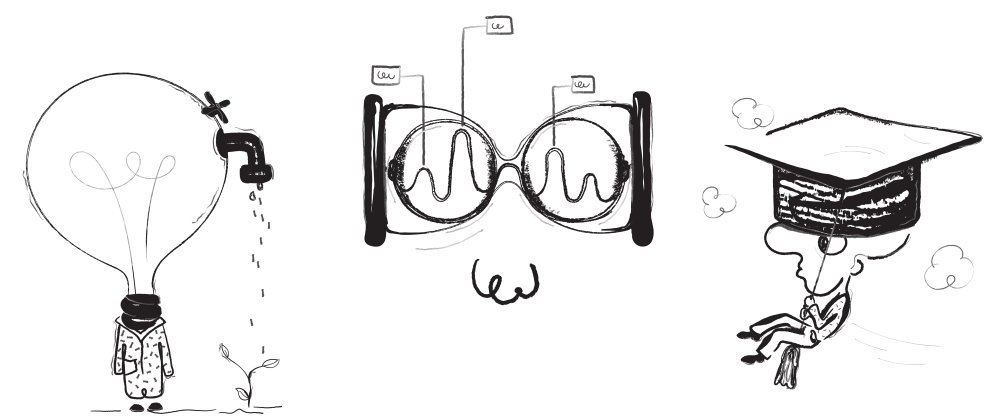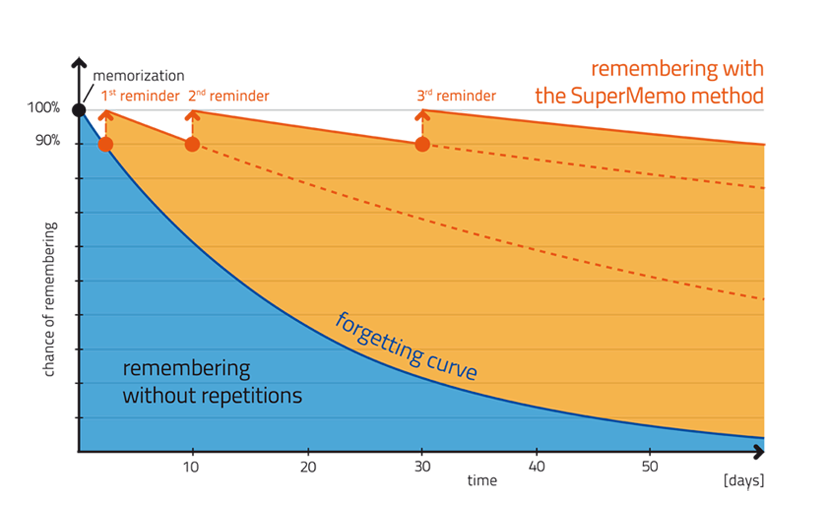Five tactics for learning, memory and, erm, what was that last one…?

Believe it or not, I’m not into blogging for the riches and fame. In fact the main reason I write blogs is to help me process and retain stuff I’ve been researching. Hunting through a book for a quote you can’t quite remember or a graph you want to reproduce (as I have done below) is a great way to refresh your memory on what you read several months or years ago. It’s almost as if those teachers who made you write endless essays about old books knew what they were doing!
Anyway, here are five other learning techniques I find useful and which I hope I’ve presented in a way that makes them easy for you to recall…
1. Don’t take notes, take notice
Note-taking during a talk, presentation or seminar is obviously a classic learning method, but never just copy the speaker’s words verbatim. Try to rephrase them as you go along and add any thoughts of your own. This will help you understand the meaning better and also make it stick in your memory. (If you do want an exact transcript of the talk, most speakers will post links to notes and slides after the event. And you can always record it yourself.)
Make time after a conference or meet-up (perhaps a few days later) to go over your notes and try to summarise them. Transfer the points you jotted down to another format, such as a to-do list or a blog about the event. Share and compare notes with a colleague. The more you engage with the ideas, the more readily you will be able to apply them to a relevant situation.
2. Just doodle it!
Don’t underestimate the power of doodles. A silly drawing might seem like a bit of fun or a potential distraction, but it can be yet another way of engaging with an idea. Ultimately anything you learn from a talk or a tutorial will be applied in a completely different format, ranging from a line of code to a conversation. Drawing pictures to represent ideas…
Lots of drawing at #TechNott tonight! Thanks for the fun times Cara, I love drawing ? @GraphicChange @technottingham pic.twitter.com/8Z70pqB9TJ
— Lex Lofthouse (@Loftio) March 11, 2019
…helps us get better at applying our knowledge in different contexts.
Doodles will also help those with a strong visual memory recall the ‘shape’ of a page of notes, which in turn helps us remember the information. The doodles can be completely abstract if you prefer. You can also draw with your words, writing in different sizes or unconventional alignments. Underline things, draw arrows between related points… just scribble!
3. Other things you can do(odle)
If you’re an auditory rather than a visual learner (see here for the VAK model of learning styles), doodle with sounds; make up a song, poem or a joke about what you’re trying to remember. These may or may not be things you want to share with colleagues, but the important thing is hooking the knowledge to a memory. Ancient story-tellers used rhyme and melody to make their tales more memorable and many of us can still recall educational ditties we learnt at school.
A kinesthetic learner – someone who learns through physical experiences – will benefit from props and role-playing, which is essentially another way of doodling with an idea. Proponents of different project methodologies have taken to using Lego (other building toys are available) to explain collaboration because abstract concepts like Agile or Gitflow can leave behind people who don’t dig graphs.
Whatever your primary style of learning, you should always experiment with others. Again, the goal is to become good at transferring what you learn into different contexts. Imagine you have to explain what you have learnt to someone with a different learning style (as you will inevitably have to do at some point).
You should also consider that different learning styles will work better for different topics. If you want to learn how to network more effectively with strangers at a conference, does it make more sense to read a book or do some role-playing? This might make you feel very uneasy, but be aware that it isn’t your natural learning style and later try to reframe what you take away in a style that you are more comfortable with.
4. Get practical
If you’re learning a new library – or a new language even – don’t just follow the ‘Hello World!’ and tic-tac-toe examples in tutorials. As soon as you think you are capable (and by this point you’re probably not, but don’t worry about that) try to apply your learnings to a personal side project, ideally something with a practical use or commercial potential. Maybe now is the time to make a rough prototype of that billion-dollar app you’ve got in the back of your mind!
The whole reason for learning new coding skills is to solve real-world problems, not prove we can copy and paste. Simply having knowledge isn’t enough; we need to utilise that knowledge to overcome challenges. That’s how we provide value to our clients.
At the same time, be aware of the Dunning–Kruger effect and don’t allow yourself to think that, because your first app worked, you’re now a master of this tech. Check out what people who really are masters in their field are doing and humbly accept that you still have so much left to learn.
5. Reminisce like it’s going out of fashion
From time to time, revisit your old projects. Poke around the code, reflect on what you did then and consider how you would do it now. If you would do things exactly the same, you’re not learning enough! The ideal outcome of this nostalgia is that you want to delete every line and start again from scratch. It doesn’t mean you failed last time, it just means you’re so much better now (and can be even better in the future).
Revisiting old work, even if it turns out to be pretty neat, is also a helpful tactic for retaining previously acquired skills. In the 1980s, Piotr Wozniak created the SuperMemo system, computer software that boosted learning by re-presenting information at increasing intervals (1 day, 10 days, 30, 60, etc):

Basically, what you learn today you will forget tomorrow, in a few weeks or several months if you don’t revise it. So, bookmark this post, then set some calendar reminders to come back to it later.
And in the meantime go off and do some doodles about the main themes!
- Header image doodles courtesy of absurd.design